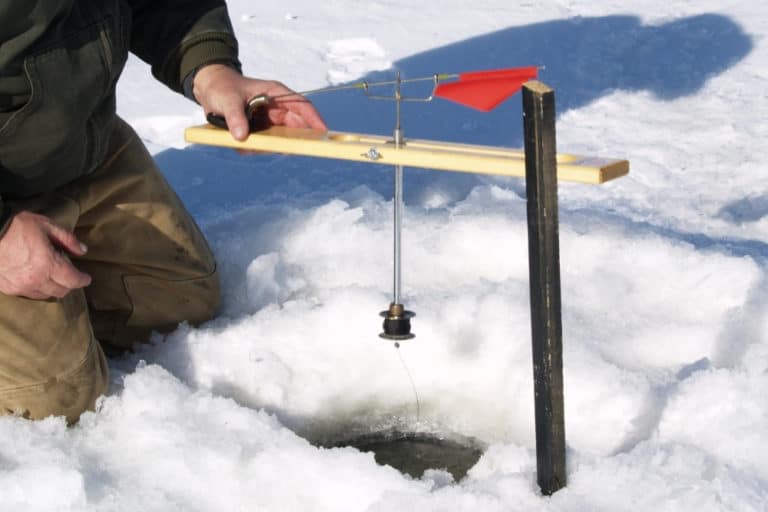What To Bring Ice Fishing
If you’ve recently decided to try your hand at ice fishing, or have overcome your fear of heading out on the ice, you’ll probably want to know what to bring ice fishing if you want to be successful, and more importantly, safe.
It shouldn’t come as a surprise that ice fishing requires quite a bit of specialist equipment. After all, it’s one of the most difficult forms of fishing and is done in some of the most treacherous conditions anywhere in the world.
Facing this without preparing adequately is very dangerous and puts both yourself and potential rescuers into harm’s way should things go wrong.
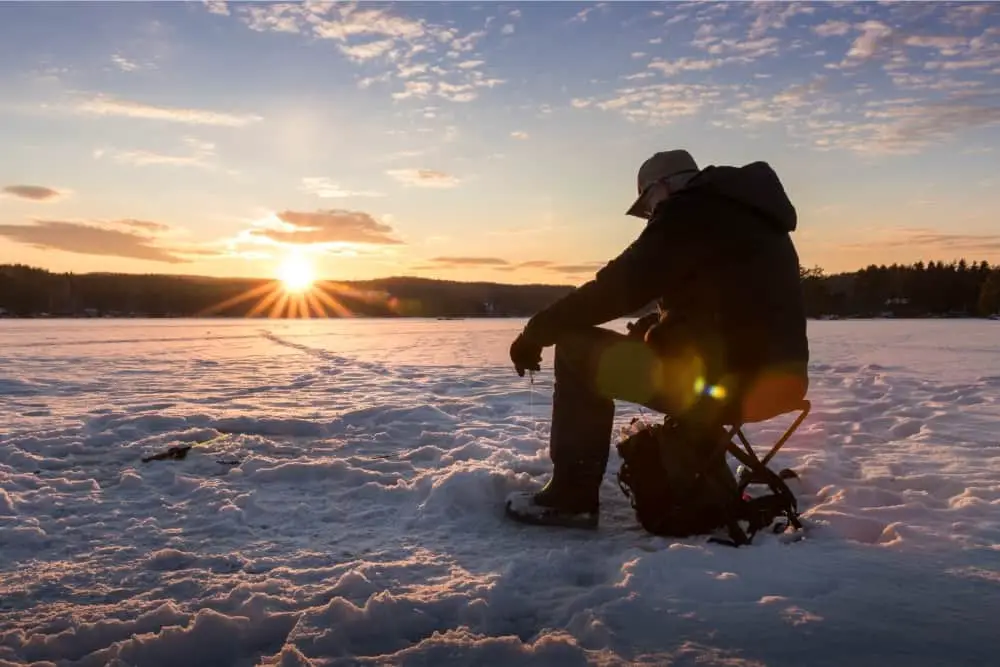
Thankfully, there are plenty of steps you can take to mitigate the danger of ice fishing, making it as safe, comfortable, and enjoyable as possible.
To make sure you’re able to get started in the best possible way, we’re going to look at 10 of the most important things to bring ice fishing, as well as why they’re so important, to make sure you’re able to build confidence and get started safely.
Table of Contents
1. Winter Clothing
Winter clothing is very important for ice fishing or any sport that takes place in frozen environments.
If you don’t prepare properly you will make your time on the ice much less enjoyable, and open the door to possible disaster should conditions change or disaster strike you.
Winter clothing is absolutely essential and comes in a few separate parts. The most important part is a quality winter jacket and ice fishing trousers.
Winter jackets are very important because they insulate you, and are highly waterproof to keep snow and water from causing your body temperature to drop.
They are also quite often made of ripstop material to prevent damage, making them durable and strong for long days in difficult conditions, and are also breathable to help your sweat evaporate more easily.
Ice fishing trousers come in many forms, from standard pants to ice fishing overalls or bibs which are all designed to be waterproof, supportive, and with great storage for keeping your equipment to hand.
Additional accessories such as hats, gloves, waterproof boots, and underclothes are also very important in keeping warm on the ice. Don’t try to head out in standard clothes as this will make you uncomfortable and put you in more danger than you realize.
2. Ice Fishing Rods & Lines
If you’re ice fishing, you’re going to need something to ice fish with! But don’t be mistaken in thinking you can use traditional fishing rods and lines for ice fishing, as this will leave you in a very bad spot and without any fish to show for your trouble.
Standard fishing rods are too long for ice fishing and are designed for precise casting over open water, and simply can’t function for ice fishing.
What you need for ice fishing is a specific rod known as a radius rod, which is designed to give you much more feel and control over any bites you may get while ice fishing and is designed to work perfectly in cramped, difficult conditions peculiar to ice fishing.
Ice fishing lines are also much tougher than standard fishing lines, which can break due to the extremely cold temperatures of ice fishing.
Ice fishing lines are often braided and much thicker than standard lines, which is what allows them to withstand the extreme conditions of ice fishing and still perform their task.
3. Fishing Lures
One of the big challenges with ice fishing is that you can’t properly mimic live bait due to the stillness of the water, its depth, and its darkness.
To make this easier, most ice fishers use a jig to raise and lower the lure, which will help attract fish if you aren’t using actual live bait such as minnows.
4. Ice Auger
Something a lot of beginners will wonder is how do ice fishers actually break the ice? Do they rely on tired pickup lines?
Of course not, as with most things ice fishing, there are specialist tools to make getting through the ice as easy and convenient as possible.
Drilling a hole into the ice is done using an ice auger, which resembles a large corkscrew drill that can either be gas-powered or hand-operated, depending on your budget or if you enjoy the exertion of physically breaking the ice yourself.
It’s usually advisable to start with a hand-operated auger and upgrade to a gas-powered version down the line once you’ve done more than take a nibble at the hobby.
For experienced long-term anglers, a gas-powered auger will make life much easier and get you fishing sooner even in tough conditions or thick ice covering.
5. Safety Equipment
Arguably the second most important piece of equipment after proper winter clothing is the safety equipment you bring.
Ice fishers should always be wearing a life vest or have buoyancy aids readily available because there’s nothing more dangerous than falling into frozen water.
Just a minute or two of submersion in bad conditions can be fatal, and loss of limb and frostbite can occur even if you aren’t submerged for very long at all.
You should also bring a tape measure to check the thickness of the ice, and it’s important to take into account your own weight, along with the time of the year, tides, and other important factors to determine whether the ice is stable enough for ice fishing.
As a general rule, if the ice is thinner than 4 inches it isn’t safe for walking or fishing under any circumstances.
Between 4 to 6 inches of thickness is workable but requires vigilance and regular checking of ice thickness to be safe as you move over the ice.
6 to 8 inches of ice is safe enough for fairly comfortable travel and means that the ice can take the weight of more than one person quite reliably.
Anything over 8 inches means that ice will be able to take the weight of a vehicle, although this is of course especially dangerous and should never be done lightly or by inexperienced ice fishers.
6. Buckets and Sleds
Buckets are perfect for transporting your equipment in, and double up as a place to store your catch and a place to sit!
Remember to bring lids and covers with the buckets so you can cover them while they are occupied by your catch and you can continue to sit on them.
Sleds are a great way to transport all your equipment across the sometimes great distances ice fishing requires.
7. Fishing License
While this may be obvious to some, beginners may not know a license is required, and you must keep yours with you if you’re out ice fishing.
8. Fish Finder
Finding fish can be notoriously difficult while ice fishing.
A fish finder helps mitigate this difficulty and provides a host of data to help you pinpoint where the fish are using temperatures and graphical displays to help you find the perfect fishing spot.
9. Ice Fishing Shelter
While these aren’t essential, ice fishing shelters can make a huge difference to the comfort of your ice fishing, and help keep the worse conditions off you and your equipment.
10. A Heat Source
Again, this isn’t essential if you’re properly equipped, but a source of heat, whether it be a flask of warm drink or hand/boot warmers, these can all help keep you on the ice for longer and make things much more enjoyable.

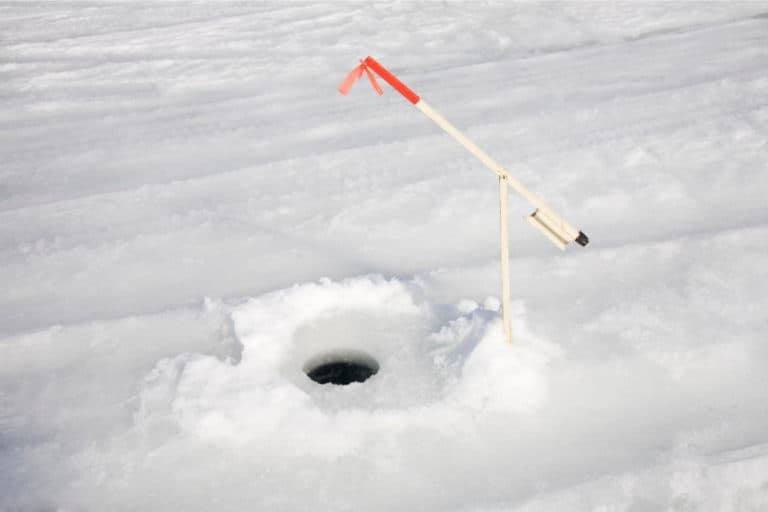
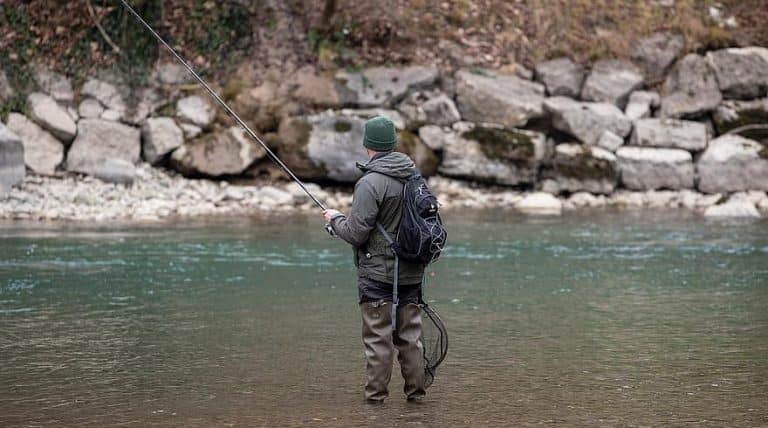
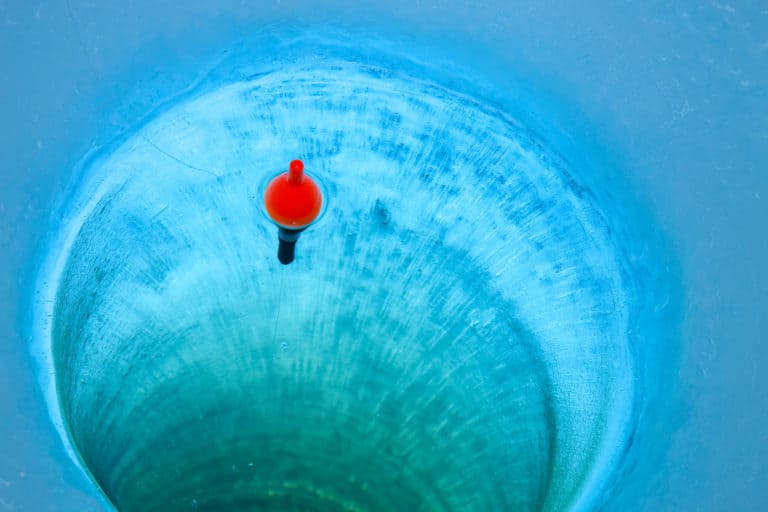
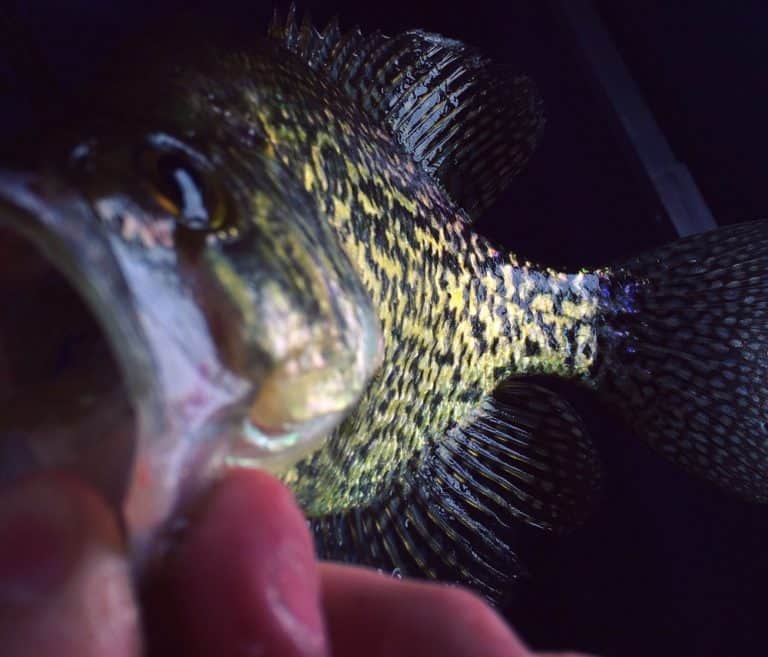
![7 Best Fishing Pliers [In-depth Reviews & Buyers Guide]](https://watersportingadventure.com/wp-content/uploads/2020/10/pexels-shane-kell-2431454-scaled-e1602751936800-768x336.jpg)
